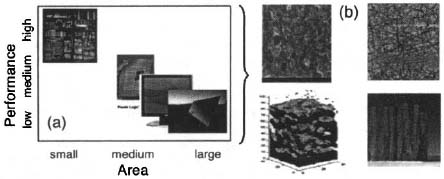The Future of Microelectronics is ... Macroelectronics
Dept. of Electrical and Computer Engineering, Purdue University West Lafayette, IN 47906-3800, U.S.A.
1. Introduction
The title is actually not as provocative as it might seem. No one debates the miraculous success of microelectronics - enshrined in Moore’s law and iconified by Pentium chips – in transforming how we compute and communicate. Even as the technology – buffeted by many fundamental limits - slides into a more mature phase, the degree of miniaturization of transistors continues to amaze, e.g., the number of transistors made in a year by Intel or TSMC exceeds the estimates of ants or leaves in the world! Yet, the most exciting trends in electronics today are defined not by computers, but by flat panel displays, solar cells, and bioelectronics sensors. Sizing the solar cells, batteries or flat panel TV to the dimension of a Pentium is obviously counterproductive, if fact for such systems – the bigger, the better. If we categorize the electronics of flat-panel displays, energy conversion and conservation devices as being macro- or large-scale electronics1 (see Fig. 1), presumably few would quibble with the title of the article that “the future of microelectronics lies with macroelectronics”.2,3

Figure 1. (a) Traditional microelectronic ICs emphasize high performance with small footprint ...
Get Future Trends in Microelectronics: From Nanophotonics to Sensors to Energy now with the O’Reilly learning platform.
O’Reilly members experience books, live events, courses curated by job role, and more from O’Reilly and nearly 200 top publishers.

